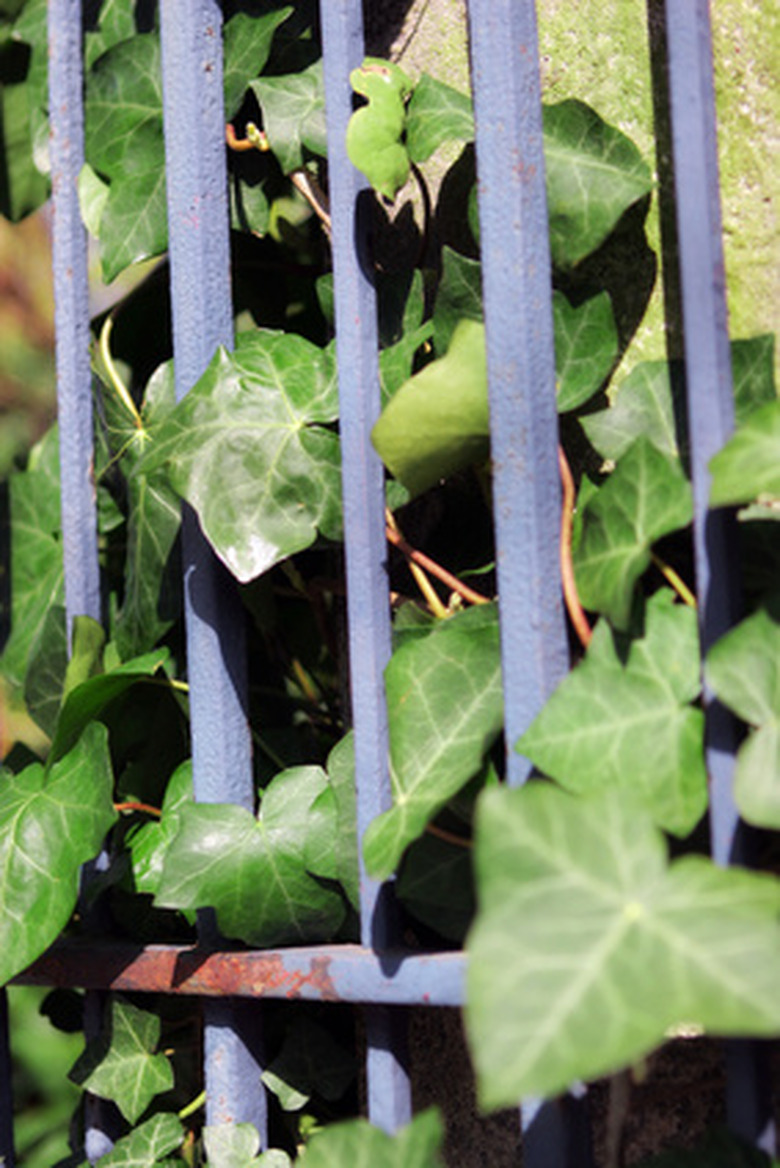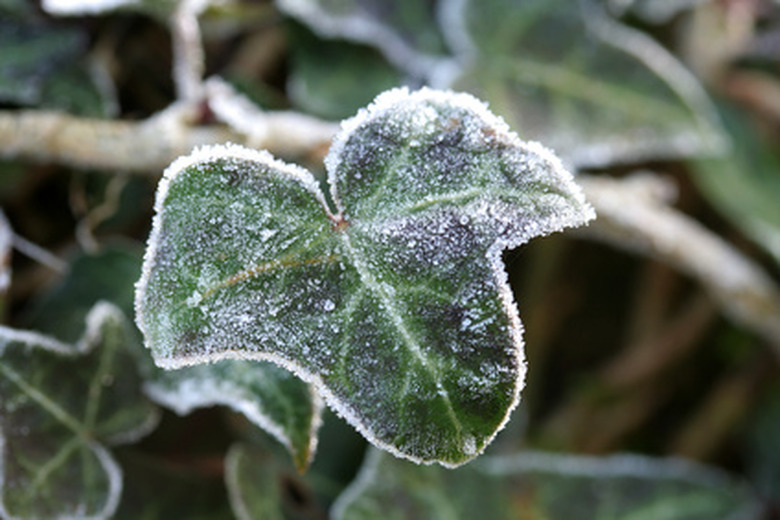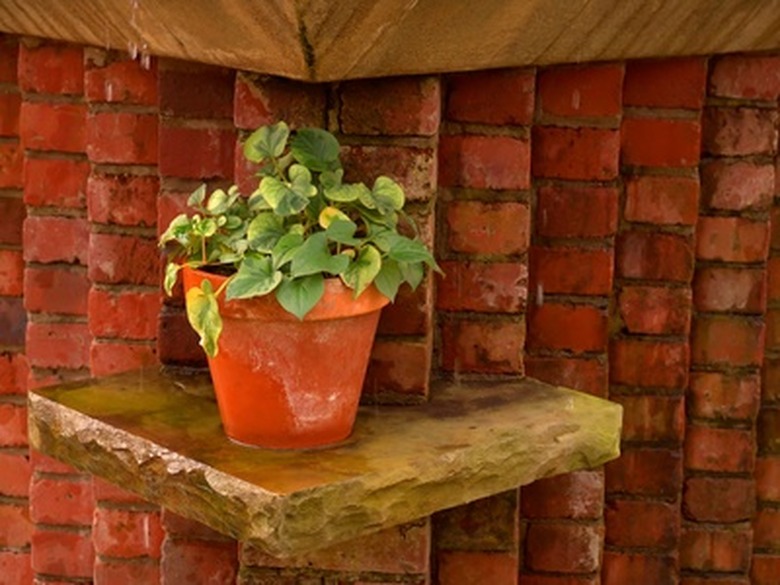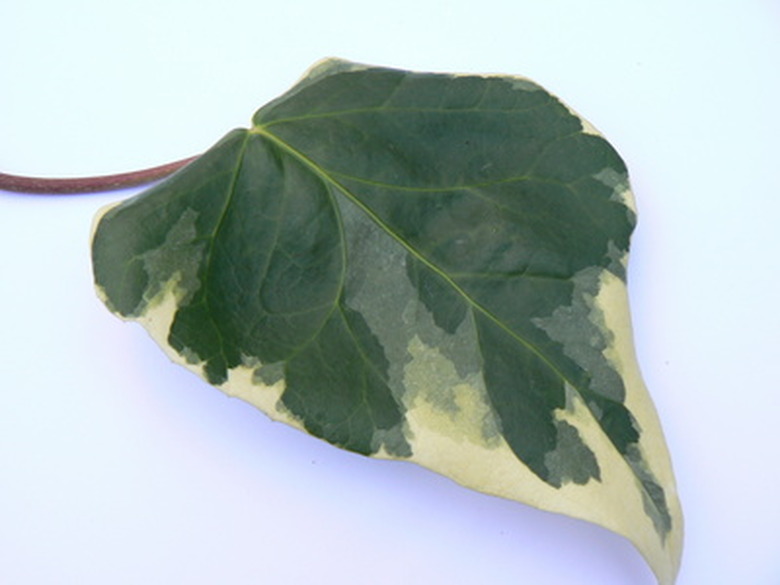Tropical Ivy House Plants
Tropical ivy is easy to grow. Ivy grows in outdoor gardens and landscapes and indoors as a houseplant. The plant grows well in indirect light, sun and shade, and in almost any type of soil. Ivies are also easy to propagate through cuttings of shoots that can be rooted in water or directly in soil. The versatile plant can be trained to trail up a wall or trellis or as an ornamental topiary.
Hedera
Common ivy is part of the genus Hedera, and is found in temperate and sub-tropical climates around the world. This hardy plant has dark green, variegated leaves on vines that can grow to 5 feet long. Plant hedera in bright but indirect sunlight, and keep soil damp.
- Tropical ivy is easy to grow.
- The plant grows well in indirect light, sun and shade, and in almost any type of soil.
Devil's Ivy or Golden Pothos
Epipremnum aureum, known as golden pothos or devil's ivy, is native to the Solomon Islands. Devil's ivy has broad green leaves splashed with brilliant golden yellow. In the wild, its leaves can grow as long as 3 feet. Plants need bright but indirect light, especially in summer. Water pothos frequently during summer months, but but sparingly in winter. Dust leaves occasionally, and re-pot the ivy every spring.
Cape Ivy
Cape ivy (Macroglossus variegatus) is native to South Africa. This flowering ivy has fleshy green leaves. It should be planted in bright but indirect sunlight. Cape ivy should be watered more frequently during summer months, but allow the soil to become dry between watering. Water sparingly in winter months.
- Epipremnum aureum, known as golden pothos or devil's ivy, is native to the Solomon Islands.
- Cape ivy should be watered more frequently during summer months, but allow the soil to become dry between watering.
Care Of Ivy Plants
It's easy to see why ivy is such a popular houseplant. Hundreds of ivy cultivars are available to choose from in a wide variety of leaf shapes, sizes and colors. Ivy is adaptable, lending itself beautifully to a hanging basket or winding its way up a support. Three are commonly grown indoors: • Algerian ivy (Hedera caneriensis) has large leaves and is a rapid grower, making it ideal for a hanging basket. It's commonly used by the florist trade in bouquets. & amp;#x2022; Curlies–These ivies have leaves which are wavy, ruffled or ridged. & An ivy plant can fall into more than one of these categories. amp;#x2022; 'Gold Heart' has heart-shaped leaves with centers of creamy yellow. & Use a good rich all-purpose potting soil, or a soil-less potting mix. Make sure the container has good drainage. Keep the plant out of drafty areas. Remember that the plant does not need as much water in the winter months as it does the rest of the year. Feed your ivy during its active growth period, spring through fall. As soon as the roots become well devleoped, you can pot the stems to share with others.
- It's easy to see why ivy is such a popular houseplant.
- As soon as the roots become well devleoped, you can pot the stems to share with others.
Care Of Ivy Plants
It's easy to see why ivy is such a popular houseplant. Hundreds of ivy cultivars are available to choose from in a wide variety of leaf shapes, sizes and colors. Ivy is adaptable, lending itself beautifully to a hanging basket or winding its way up a support. Three are commonly grown indoors: • Algerian ivy (Hedera caneriensis) has large leaves and is a rapid grower, making it ideal for a hanging basket. It's commonly used by the florist trade in bouquets. & amp;#x2022; Curlies–These ivies have leaves which are wavy, ruffled or ridged. & An ivy plant can fall into more than one of these categories. amp;#x2022; 'Gold Heart' has heart-shaped leaves with centers of creamy yellow. & Use a good rich all-purpose potting soil, or a soil-less potting mix. Make sure the container has good drainage. Keep the plant out of drafty areas. Remember that the plant does not need as much water in the winter months as it does the rest of the year. Feed your ivy during its active growth period, spring through fall. As soon as the roots become well devleoped, you can pot the stems to share with others.
- It's easy to see why ivy is such a popular houseplant.
- As soon as the roots become well devleoped, you can pot the stems to share with others.
References
- "The Ivy Book: The Growing and Care of Ivy"; Suzanne Pierot and Aleta Pahl; 1995.
- "An Ivy Green Thumb"; Dr. Charles W. Dunham; Retrieved May 17, 2010.
- American Ivy Society
- English Ivies to Grow and Know, University of Florida Extension
- Indoor Ivy, Clemson Extension
- American Ivy Society
- English Ivies to Grow and Know, University of Florida Extension
- Indoor Ivy, Clemson Extension



